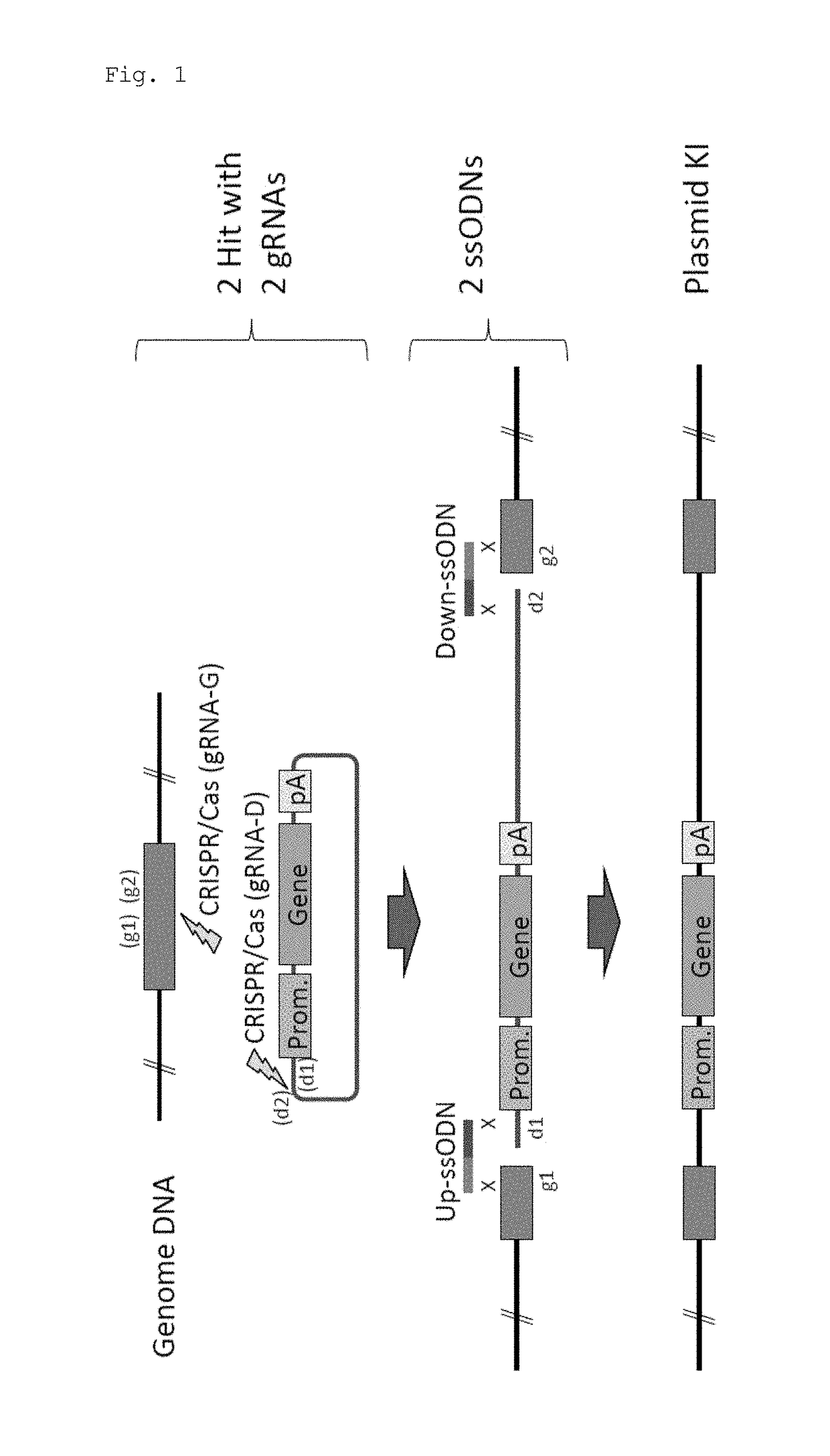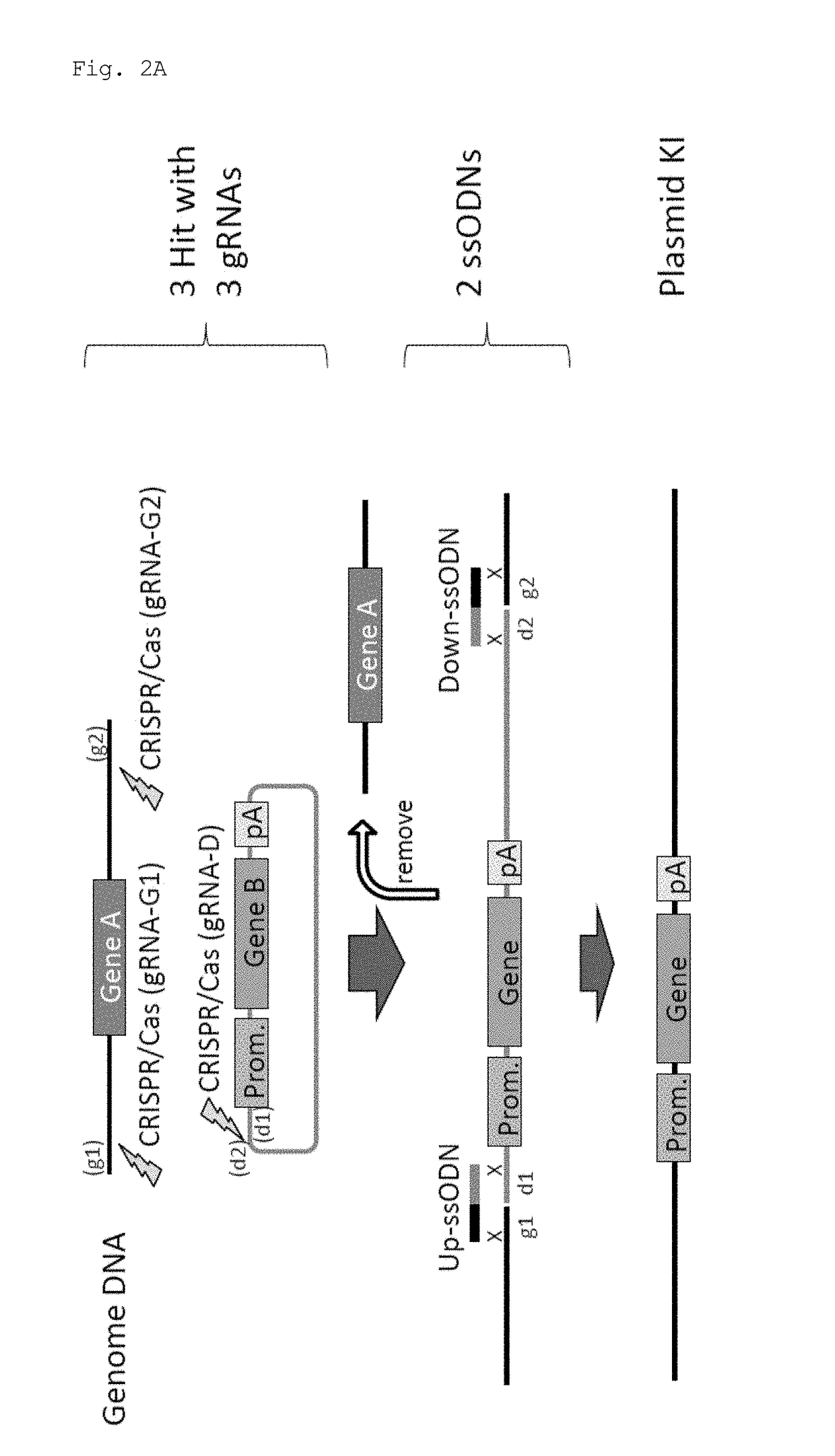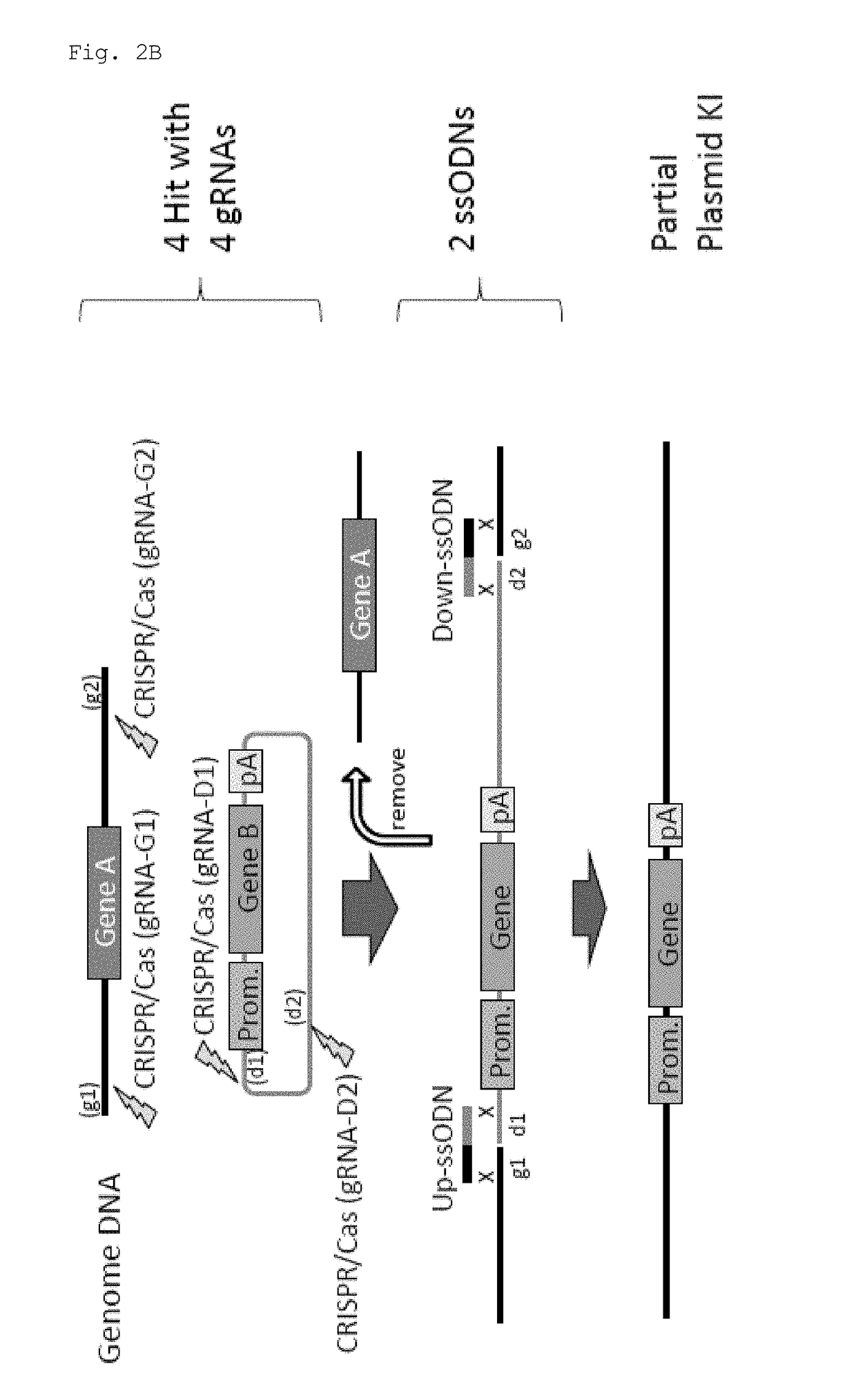Method for knock-in of DNA into target region of mammalian genome, and cell
a technology of dna knock-in and target region, which is applied in the field of knock-in of dna into the target genomic region of a mammal, and cells, can solve the problems of difficult knock-in of long-chain gene sequences of gfp or the like, and the hr is generally far less efficient than nhej in dsb repair, so as to facilitate accurate and efficient knock-in of the donor, shorten the experiment time, and the effect of high efficiency
- Summary
- Abstract
- Description
- Claims
- Application Information
AI Technical Summary
Benefits of technology
Problems solved by technology
Method used
Image
Examples
example 1
(1) Experimental Method
[0067]In this experiment, Cas9 expression plasmid (hCas9: Addgene ID#41815) and gRNA expression plasmid (pDR274: Addgene ID#42250) obtained from Addgene (www.addgene.org / CRISPR) were used. Modifications such as introduction of a T7 promoter upstream of the Cas9 gene were made in the Cas9 expression plasmid. pCAG plasmid was obtained from Riken BioResource Center, and the GFP gene and the human CYP2D6 gene were introduced.
[0068]Target sequences were determined using CRISPR Design Tool (crispr.genome-engineering.org), and gRNA expression plasmids that recognize the sequences were prepared (Table 1). Using the Cas9 expression plasmid, in vitro transcription, poly A addition reaction, and RNA purification were sequentially performed, thereby preparing Cas9 mRNA. gRNAs were also prepared by performing in vitro transcription and RNA purification. Further, ssODNs each having a sequence homologous to one of the sites generated by cleavage in a genome and to one of the...
PUM
| Property | Measurement | Unit |
|---|---|---|
| time | aaaaa | aaaaa |
| length | aaaaa | aaaaa |
| total length | aaaaa | aaaaa |
Abstract
Description
Claims
Application Information
 Login to View More
Login to View More - R&D
- Intellectual Property
- Life Sciences
- Materials
- Tech Scout
- Unparalleled Data Quality
- Higher Quality Content
- 60% Fewer Hallucinations
Browse by: Latest US Patents, China's latest patents, Technical Efficacy Thesaurus, Application Domain, Technology Topic, Popular Technical Reports.
© 2025 PatSnap. All rights reserved.Legal|Privacy policy|Modern Slavery Act Transparency Statement|Sitemap|About US| Contact US: help@patsnap.com



